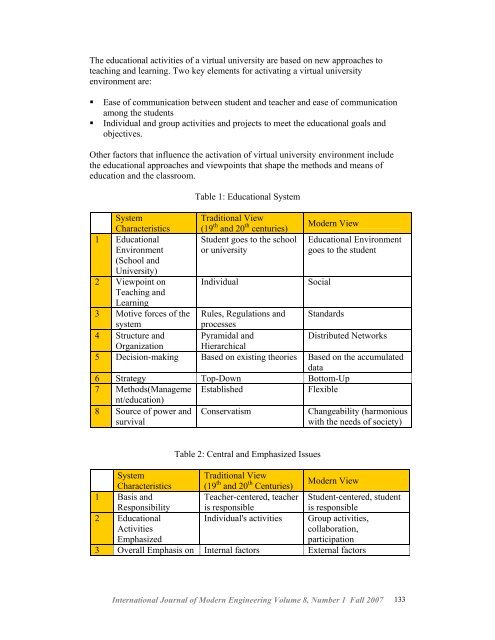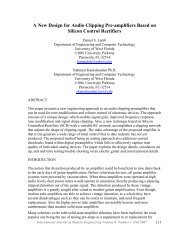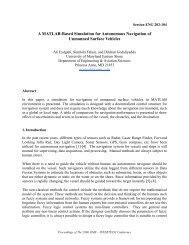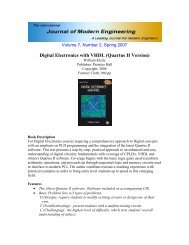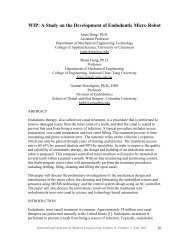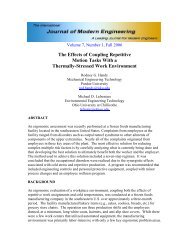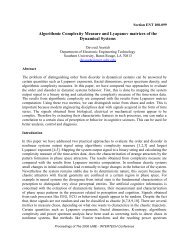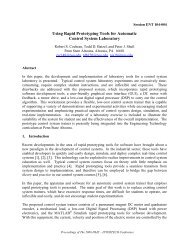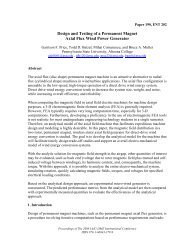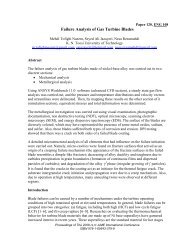Comparison Classical Method of Education and Modern Web ... - IJME
Comparison Classical Method of Education and Modern Web ... - IJME
Comparison Classical Method of Education and Modern Web ... - IJME
Create successful ePaper yourself
Turn your PDF publications into a flip-book with our unique Google optimized e-Paper software.
The educational activities <strong>of</strong> a virtual university are based on new approaches to<br />
teaching <strong>and</strong> learning. Two key elements for activating a virtual university<br />
environment are:<br />
• Ease <strong>of</strong> communication between student <strong>and</strong> teacher <strong>and</strong> ease <strong>of</strong> communication<br />
among the students<br />
• Individual <strong>and</strong> group activities <strong>and</strong> projects to meet the educational goals <strong>and</strong><br />
objectives.<br />
Other factors that influence the activation <strong>of</strong> virtual university environment include<br />
the educational approaches <strong>and</strong> viewpoints that shape the methods <strong>and</strong> means <strong>of</strong><br />
education <strong>and</strong> the classroom.<br />
Table 1: <strong>Education</strong>al System<br />
System<br />
Traditional View<br />
Characteristics (19 th <strong>and</strong> 20 th centuries)<br />
<strong>Modern</strong> View<br />
1 <strong>Education</strong>al<br />
Environment<br />
Student goes to the school<br />
or university<br />
<strong>Education</strong>al Environment<br />
goes to the student<br />
(School <strong>and</strong><br />
University)<br />
2 Viewpoint on Individual<br />
Social<br />
Teaching <strong>and</strong><br />
Learning<br />
3 Motive forces <strong>of</strong> the Rules, Regulations <strong>and</strong> St<strong>and</strong>ards<br />
system<br />
processes<br />
4 Structure <strong>and</strong> Pyramidal <strong>and</strong><br />
Distributed Networks<br />
Organization Hierarchical<br />
5 Decision-making Based on existing theories Based on the accumulated<br />
data<br />
6 Strategy Top-Down Bottom-Up<br />
7 <strong>Method</strong>s(Manageme Established<br />
Flexible<br />
nt/education)<br />
8 Source <strong>of</strong> power <strong>and</strong><br />
survival<br />
Conservatism<br />
Changeability (harmonious<br />
with the needs <strong>of</strong> society)<br />
Table 2: Central <strong>and</strong> Emphasized Issues<br />
System<br />
Traditional View<br />
Characteristics (19 th <strong>and</strong> 20 th Centuries)<br />
<strong>Modern</strong> View<br />
1 Basis <strong>and</strong><br />
Responsibility<br />
Teacher-centered, teacher<br />
is responsible<br />
Student-centered, student<br />
is responsible<br />
2 <strong>Education</strong>al<br />
Activities<br />
Emphasized<br />
Individual's activities Group activities,<br />
collaboration,<br />
participation<br />
3 Overall Emphasis on Internal factors External factors<br />
International Journal <strong>of</strong> <strong>Modern</strong> Engineering Volume 8, Number 1 Fall 2007 133


